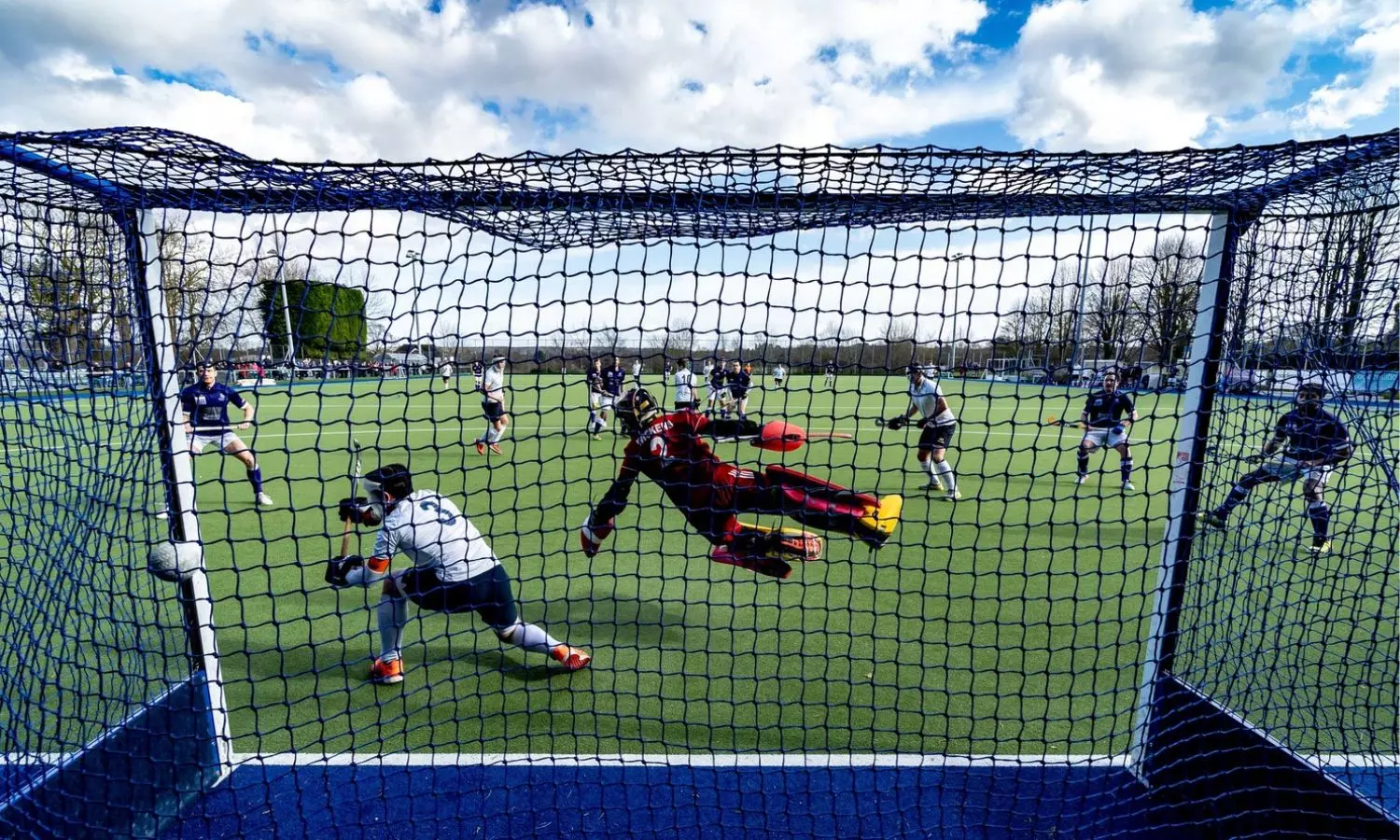Hockey
Hockey's proposed penalty corner rule: Beginning of the end of the diligent art of drag flick
According to the proposed rule, the attacking players will be at least five metres outside the 'D' box during penalty corners and the ball must travel beyond the D before it can be hit back into the box for a shot at goal.

An action of penalty corner with drag flicker shooting the ball into the goalmouth in England. (Photo credit: LJ Mac)
In hockey, no aspect of the game is as exciting as the penalty corner, the most potent weapon for scoring goals. But the International Hockey Federation's (FIH) latest effort to cut down the danger of defenders getting hit from a mighty smash could mark the beginning of the end of the diligent art of taking penalty corner, which is drag-flicking - an action when an attacker stops the ball just outside the D box, then drags it inside the circle and flicks it towards the goal. The flick is taken from a distance of approximately 12 metres from the goal and can travel at a brisk speed, posing a danger to defenders.
Even though penalty corner has been part of hockey since 1908, its rules have changed multiple times over the years as FIH, the nodal body of international hockey, tried to make the sport risk-free. The latest of those penalty corner rule changes came into effect in January 2022.
India's drag-flick specialist Rupinder Pal Singh scoring a goal against the Netherlands in the FIH Pro League on January 19, 2020.
The federation then allowed players to defend penalty corners keeping their protective equipment on even after the ball goes outside the striking circle but must remove them at the first opportunity inside the 23m area, the defending zone.
Four months later, the FIH launched the 'Future of Penalty Corner' project with the intent to avoid 'serious or fatal incidents'.
"We must consider making changes to the penalty corner rules before serious or fatal incident occur and not wait to react until afterward," the FIH asserted.
What does the proposed rule state?
According to the proposed rule released by FIH, during a penalty corner, the attacking players, with the drag-flicker at the backline, will be at least five metres outside the 'D' box, the striking circle. The ball must travel outside the line beyond the D before it can be hit back into the box for a shot at the goal.
This will give defenders more time to counter the situation than it used to do earlier. It could eventually dilute the impact of the penalty corners and skilful drag flickers, who are high in demand in hockey today because of the magnitude of chances penalty corners create for goals.
Reacting to the proposed rule, India head Craig Fulton, who managed Ireland and Belgium in the past, told The Bridge, "I am not really a fan of radical changes in the game. I know it is not final yet. They will be very brave to do that but if I will be honest, making penalty corner almost non-existent is not something I am a fan of."
"The biggest factor is to minimise the danger for the first rusher and the defenders who usually take the hit. But it will be similarly dangerous if the players can make the pass and flick inside the D," added Fulton.
Echoing his coach, Indian skipper Harmanpreet Singh, one of the fiercest drag flickers in the world, said, “If the ball has to come back to the D and players can flick from there, the danger remains the same for the defenders. We will get more space as we don’t have any first rusher to beat and we can try a drag flick from anywhere.”
Will this new rule be in effect at Asian Champions Trophy?
No. The proposed penalty corner rule change will not be under trial at the Asian Champions Trophy, starting on August 3. Last week, the FIH, in a letter to its member associations, dictated that the proposed change in penalty corner will be conducted in a 'small number of competitions around the world' from August 2023 to May 2024, preferably in domestic and junior level tournaments. The international federation has asked its national member associations to provide inputs on the trials being held in local leagues and competitions in the aforementioned period.
What will be taken into stock during the trial period?
The number of goals scored and the nature of injuries sustained will be taken into account in the final assessment.
These data will be crucial for FIH to decide whether to officially implement the rule change or persist with the existing rule. However, the bona fide rule will continue to be effective in the Paris Olympic Games.
What is the existing rule of penalty corner?
As per the existing rule, the attacking team starts offence on the edge of the D box. The drag-flicker pushes the ball, which has to be stopped outside the D before taking a shot at the goal, either with a hit or drag flick.
Why did the FIH propose a rule change in penalty corner?
The FIH came up with its proposal to bring a radical change in the game after its health and safety committee assessed 295 matches from 11 international events that took place between 2015 and 2016. The findings of the committee revealed that the penalty corner was the sole reason for 13.9 per cent of injuries (49 out of 352), including injuries to the heads of the defenders.
While the goalkeeper is equipped with various protective gears, defenders, especially the ones who move first to block the angle and those who stand at the goalline, were exposed to the hits of the drag flickers despite wearing headgear.
